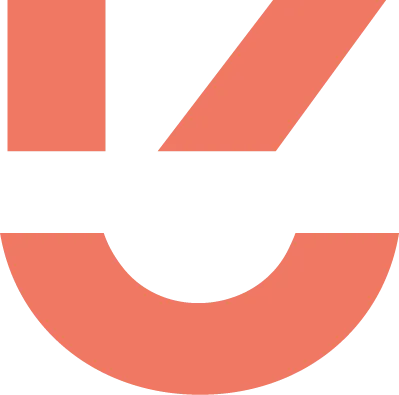Conversion Design: strategy disguised as simplicity
How do you stand out in a flood of generic, GPT-generated content? In a world where brands increasingly blur together and competitors offer near-identical products with slightly different wrapping, how does a brand truly stand out? The answer lies in strategic, deliberate choices, not just on your website, but across every marketing channel. With crystal-clear positioning and the clever use of psychological principles, you can strengthen your marketing, sharpen your brand message and make your product or service offering more compelling. Amid the noise, conversion designed content is like a wind farm generating leads.


Attract and retain
Conversion design is the strategic creation of all your marketing output with one clear goal: to drive users to take action. It's not just guesswork. It's a methodology rooted in customer research and strategic marketing aspects like brand positioning and competitor analysis. These insights drive everything: from branding and website architecture to content and beyond. Design and compelling copy aren't standalone pieces. They serve a greater purpose: conversion.
And yet, far too many websites prioritize aesthetics over effectiveness. Truth is: if your site is visually stunning but lacks clear positioning, messaging and, a compelling offering, it's just a well-wrapped empty box. Conversion design, though? That's the gift that keeps on giving.
Sidenote: conversion design vs. CRO
People often mention CRO (Conversion Rate Optimisation) in the same breath as conversion design. While they share the same goal - more conversions - they are distinct yet complementary disciplines. Conversion design lays the foundation. You build a page or funnel entirely around your ideal customer and get the fundamentals right: brand experience, UX, everything. CRO is the fine-tuning phase. Through small, targeted adjustments like copy, buttons, images, notifications and colors, you optimize existing pages for maximum conversion. Both have their place. But without a solid foundation, CRO won't get you far. The biggest results come when you apply them in the right order: first focus on conversion design to get the structure right, then fine-tune with CRO.
Rooted in behavioral psychology
Conversion design combines insights from behavioral psychology with marketing strategy. We first think of the well-known AIDA principle. Every prospect goes through several steps before they take action (or convert): awareness (or attention), intention, desire, and action. Conversion design responds cleverly to each of these steps: how do we stand out? Which messages will convince potential customers? Which call-to-action encourages the most clicks?
Empathy also plays an important role in the methodology. Conversion design assumes that a customer will convert faster if they feel understood. And that is woven throughout: in the texts that speak to and aim to persuade them, in the images in which they recognize themselves, and in the intuitive design of the communication platform. But above all in the positioning of the product or service itself: the added value must be crystal clear and relevant.
Let's not forget Cialdini: concepts like social proof (Trustpilot rating, we see you), authority (“recommended by 76% of dentists”), the consistency principle (multi-step forms as textbook example), and scarcity (“only a few spots left”) have proven their worth time and time again in CRO. Seller’s ‘cognitive load’ principle also lies at the root of these techniques: fewer choices, fewer stimuli, and thus faster decisions.
Strategy disguised as simplicity
Websites that look simple are usually anything but. Simplicity is the result of intense thought, testing, and iteration. When translating conversion designed content into a concrete website, app, newsletter, or landing page, that’s where CRO, UX and UI come into play. A page that encourages action is a carefully orchestrated path. Every element is there for a reason. White space provides direction, images guide the eye, text hierarchy and typography create structure, copy is carefully considered, and strategic buttons lead the user to the next step.
Conversion is never a coincidence. Every letter and every design element is placed with intention, to eliminate friction, balance persuasion, and provide direction without pushing.

The four crucial pillars
In the Venn diagram of strategic marketing, conversion design sits at the intersection. Where research, design, messaging and branding come together, that’s where the magic happens. Or the pseudo-science, for the rationalists among us.
1. Research
It all starts with insight into your customer. Your brand's value lives in the mind of your prospect, so to understand your value, you need to get inside their head. You can only convince people when you understand what attracts and repels them.
Too often, we find that marketing managers and business owners don't truly know their customers. They treat quantitative data like gold but overlook the equally valuable data they could get through qualitative means like customer interviews. That kind of insight is like a diamond mine. Not just for marketing, but for your business as a whole.
That's why conversion design starts with research. Think: interviews with customers, heatmaps and scroll maps, funnel analysis, and usability testing. And it pays off. In fact, solid customer research leads to 54% higher return on investment. In short: an informed, data-driven approach yields better results.
2. Branding
Research by Demand Metric shows that 90% of buyers are more likely to engage with a brand that has a unique, memorable value proposition. Accenture reports that 71% of B2B buyers are willing to pay more for a brand they feel personally connected to, compared to generic brands with no clear positioning or personality.
The message is clear: perception is everything. But to even be perceived at all, you first have to stand out, preferably in a positive, unique way. That means a clear positioning, a strong brand story, and a unique brand personality that resonates with your audience. A sharp, distinctive brand identity is essential for success.
.png)
3. Design
In a well-considered design, the principles of CRO become visible. Hierarchy and simplicity are the keywords here. What message should immediately grab attention? What belongs above the fold, and what should be placed a scroll down? Which words do you want to highlight?
Realistically, people can only focus on one thing at a time. With a Z- or F-pattern, we guide the eye naturally. And along that path, distractions are a no-go. As Antoine de Saint-Exupéry once said: “Perfection is achieved not when there is nothing more to add, but when there is nothing left to take away.” So even if you want customers to find your Instagram page, think twice before placing social links at the top of every webpage. You have full control over what your prospects see and what they don't. With smart design choices, you ensure that the right message sticks.
4. Messaging
People don’t convert based onlogic alone. They want to be moved. No vague wording, fluffy phrasing or meaningless words. There’s no room for that. Every letter counts. Not just in headlines and body text, but especially in CTA buttons, forms and error messages.
Go for clear, compelling copy that articulates what your visitor is thinking, before they even realize it themselves.Or better: copy that speaks to what they desire. There's a big difference between “Download our whitepaper” and “Discover how to get 60% more leads.” Because people don’t click just because you ask politely. They click because they want to. Because they feel seen. Triggered. Or curious about what they're missing out on.
Good messaging taps into emotion, clearly names tangible benefits, proactively addresses objections, and speaks your audience's language better than they can themselves.
Conversion design is like a great guide: invisible but ever-present, always supportive, never pushy. It leads your visitors forward, without them realizing they're being guided.
Want your website to finally do what it’s supposed to do? Let us help you with conversion design. Contact us.





